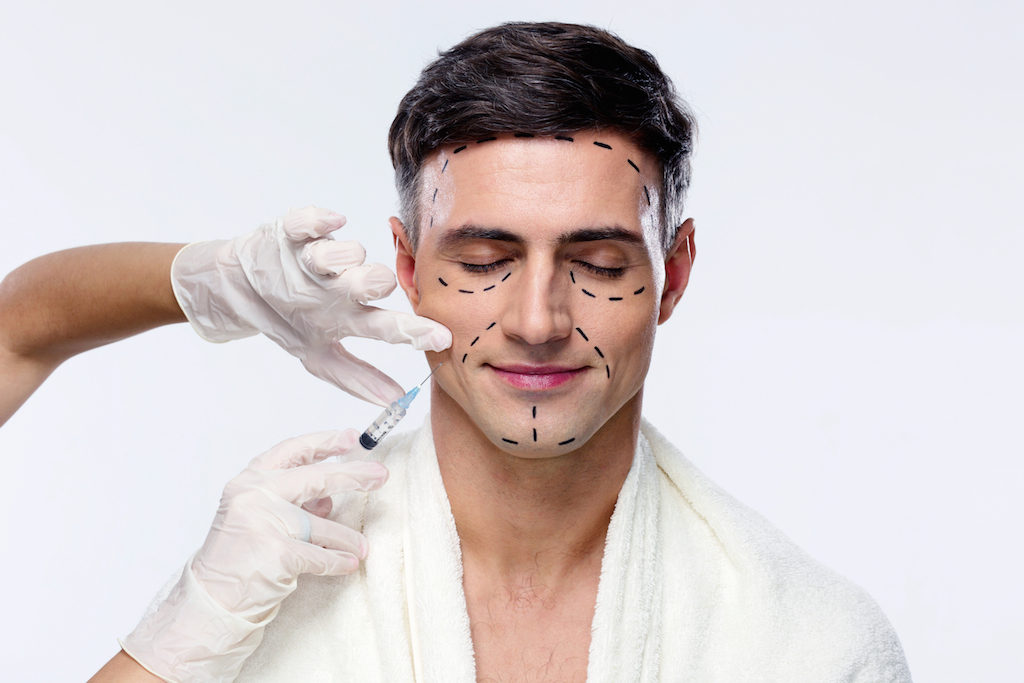Women are generally the first to come to mind when one considers plastic surgery patients, but Dr. Lucas Bryant of Nashville wants you to consider that men get plastic surgery, too. Haute Beauty caught up with the renowned plastic surgeon about men and plastic surgery.
 Photo Credit: Shutterstock
Photo Credit: Shutterstock
Haute Beauty: What are the most common areas on the face men get work done?
Dr. Lucas Bryant: In general, we have really seen the frequency of male treatments increase over the last several years. I think this mirrors the loss of stigma around aesthetic treatments overall. Rhinoplasty, eyelid surgery, facelift and neck lift treatments still top the list! The difference is often WHY they are wanting things done. As an example, a middle-aged woman may come to my office for a facelift and her primary concern is the heaviness around her mouth/cheeks and her jawline. A man may be more concerned with their neckline and jawline and are often bothered by how it folds over their dress shirt collar etc. A few things that men do seem to have done more often are hair loss treatments (hair transplant), and facial skeleton structuring with implants (jawline, cheek, chin, etc).
HB: At what age do you find men are starting to consider getting work done/opting in for surgeries?
LB: Depending on where you live in the US, men tend to have a “delay”, meaning they often don’t pursue treatments until several years later than women. Facelift and neck lift treatments are often done in the mid to late 50s, but this can still vary widely.
HB: Are there any non-invasive procedures men are getting?
LB: YES! Men can usually benefit from the same popular non-invasive procedures such as neuromodulators (Botox etc.), filler, and laser skin rejuvenation. Physicians do need to be aware that men may respond differently to some treatments because of their facial hair and anatomy, however. There are also body toning treatments, like EmSculpt that are increasing in popularity right now.
HB: Do men still hold a misconception in regards to other men getting plastic surgery?
LB: I think this misconception is still very common in some areas but is decreasing. Social media keeps increasing awareness and men and women, in general, are becoming more open about treatments they receive. At the end of the day, most people want to look and feel their best.
HB: How do you ensure a natural result through the procedures you offer?
LB: Plastic surgery is a medically complex field that also demands an eye for aesthetic design. One way that surgeons often try and achieve a natural result is simply by doing less of a treatment. While this works well for some cases, in other cases it does not! It’s important to understand that you can have a very dramatic change AND get a wonderfully natural, “true-to-you” result! To do this, I listen to my patients. After we have talked together and identified the areas of concern, I focus on the root cause of these issues. By correctly identifying the true cause, and then selecting the best treatment for that concern, the result can be both powerful AND natural! Not everyone needs or wants a dramatic change, but I want patients to know that both subtle and profound improvements can be natural. This is true for both men and women.
For more information, visit Dr. Brian A. Levine's social media:

























